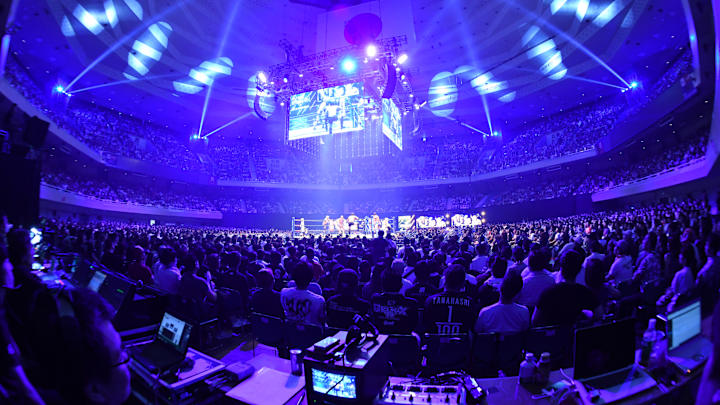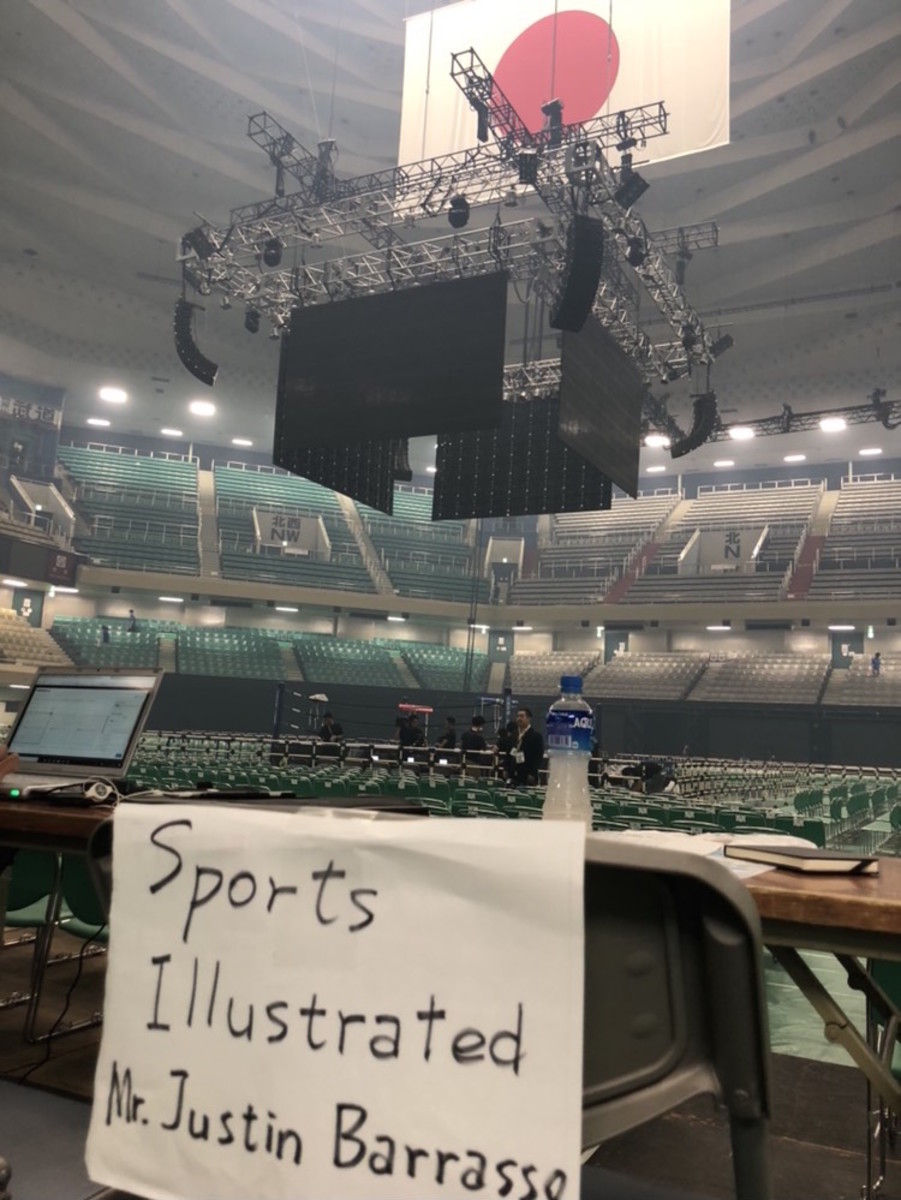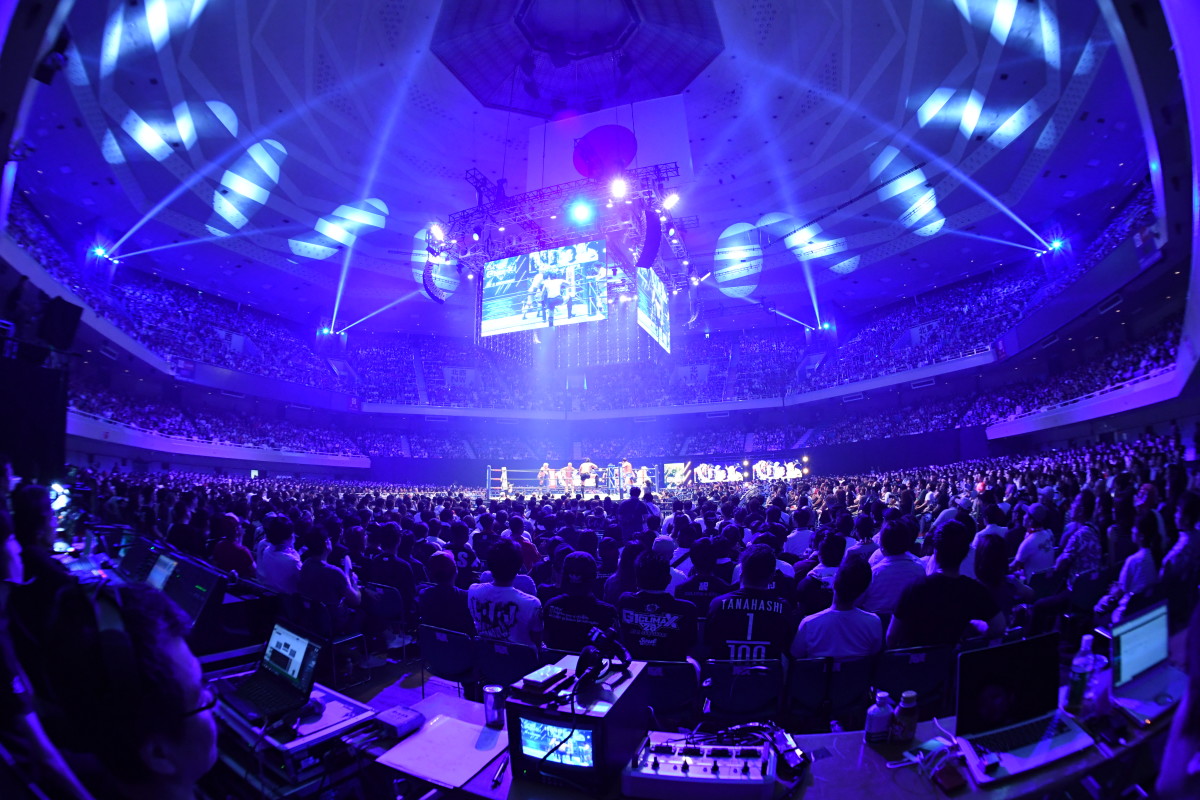Inside the Must-See Spectacle of New Japan Pro Wrestling’s G1 Climax

BOSTON — At some point during my 16-hour flight from Boston to Tokyo, unable to sleep, somewhere over the North Pacific Ocean, I asked myself, “What am I doing?”
The more I thought about it, the simpler the answer. I was headed to Tokyo to cover the final three days of New Japan Pro Wrestling’s G1 Climax, a dream come true for any wrestling fan.
I am very grateful to cover the business of professional wrestling. I started in 2012 when I wrote a story for the Boston Herald on John Cena and WWE’s new partnership with Susan G. Komen for the Cure. I pitched and pitched WWE stories until my editor, the talented Hank Hryniewicz, finally gave the green light for the Cena story. That led to the path where I am today, and I have been fortunate to cover the past four WrestleManias, as well as interview some of the business’ brightest stars over the past six years.
But I’ve never covered anything quite like the G1.

Covering New Japan is different than covering WWE. Both products take place within the confines of a squared circle, but each has a vastly different ideology on how to present pro wrestling. In many ways, New Japan reminds me of WWE during the dawn of the Attitude Era. The roster is full of colorful personalities, the storylines are a realistic reflection of the times, and the wrestlers are always pushing their work to a whole new level in the ring. If you’re a wrestling fan, and enjoy great matches, you’ll enjoy last Sunday’s G1 final as much as next Sunday’s SummerSlam.
A certain mystique and aura surrounds the world of Japanese wrestling, and witnessing the final three days of the G1 at the historic Nippon Budokan venue in Tokyo represented a chance to get up close and personal with the stars of New Japan and receive an in-person education on Japanese ring psychology.
Here are my takeaways from Tokyo:
• There is no question: this is some of the best wrestling in the world. It is difficult in the world of pro wrestling to definitively name the top three wrestlers in the world, but New Japan has five incredible talents in IWGP heavyweight champion Kenny Omega, G1 winner Hiroshi Tanahashi, Tetsuya Naito, Kazuchika Okada, and Kota Ibushi.
On top of that, there is the vastly underrated Tomohiro Ishii, the Young Bucks, Juice Robinson, Cody Rhodes, and Zack Sabre Jr. Adding Rey Mysterio to Sunday’s card only added to the anticipation and performance-level of the show. Tama Tonga’s frustration with Omega and the Bucks, in addition to his anti-company persona, is one of the best angles in all of wrestling.
New Japan Pro Wrestling president Harold Meij has the Bullet Club OG of Bad Luck, Tama Tonga, and Tanga Loa forcefully removed from the building #g128 pic.twitter.com/sUNJnn55G7
— Justin Barrasso (@JustinBarrasso) August 11, 2018
Another important element is the interviews wrestlers have with the media after matches. This offers an opportunity to advance feuds, as well as challenge for titles. It is also reminiscent of old-school wrestling interviews as the New Japan wrestlers do not work off a script.
Kazuchika Okada made headlines when he announced his break-up from manager Gedo in a post-match interview that took place backstage with reporters.
Breaking: Kazuchika Okada announces his split from manager Gedo #g128 pic.twitter.com/wO0n3d5TLp
— Justin Barrasso (@JustinBarrasso) August 12, 2018
• The live experience in Japan at a New Japan show is vastly different than in the United States.
The crowd is still extremely involved in matches by clapping, cheering, and chanting. Kota Ibushi won over the crowd with a spectacularly emotional performance in Sunday’s G1 finale, but the crowd was unanimous in its approval for the beloved Hiroshi Tanahashi from the time the bell rang to Tana’s trademark air guitar show (and encores).
But a major difference is that everyone watches from their seat.
Imagine going to a show and having no one block your view? It was like a wrestling utopia.

• Also, New Japan asks that fans do not record the matches on their phones. There is a fine for illegal recording and distribution. So people sit and watch, engaged in the matches.
The concession stands at Budokan served beverages and sandwiches (my choice was the pork, egg, and potato sandwich), but those stands closed when the show started at 6:30 p.m. There were vending machines all over Budokan that offered food and drink, and the shows moved at a pace that was fast-paced without rushing through the matches.
• Watching Kazuchika Okada vs. Hiroshi Tanhashi at Friday night’s show will forever remain one of my top memories in wrestling.
Chemistry is critical in wrestling. Ric Flair and Hulk Hogan are two of the greatest wrestlers of all time, but they did not share that necessary chemistry to elevate their matches to an entirely different level. However, Flair and Randy Savage had that chemistry, as did Steve Austin and The Rock as well as John Cena and CM Punk.
Tanahashi-Okada is the closest thing I can relate to Magic Johnson and Michael Jordan squaring off the in the 1991 NBA Finals. On the whole, the elder Tanahashi has built the more legendary career, but Okada certainly has the brighter future. They work so well together, but you can also feel the competitive spirit flowing. Over the past decade, New Japan has been built largely on the shoulders of Tanahashi, and he thrives in matches against Okada because–in addition to his phenomenal in-ring ability–he also wants to show that he remains the best in the world.
• New Japan star Toru Yano runs a sports bar, Ebrietas, where fans can hang out after the show.
And, speaking of places to eat, the famed Ribera Steakhouse did not disappoint.
The original Ribera Steak House in Gotanda pic.twitter.com/ov0ILoF9qR
— Justin Barrasso (@JustinBarrasso) August 12, 2018
— Justin Barrasso (@JustinBarrasso) August 12, 2018
There are two locations, with the original in Gotanda and a newer, more famous location in Meguro, which are two neighborhoods within Tokyo. I could not resist the history of the original, which is where I dined on Sunday night after the G1 show.
Pictures of wrestlers, including Hulk Hogan, Scott Hall, Trish Stratus, and The Rock, just to name a few, adorn the walls and ceiling. You sit at a stool and eat on a bar counter top, and the menu was not complicated. There is the large, one-pound steak and the small, half-pound steak. Mine came with corn and rice as sides.
I look forward to trying the location in Meguro during a return visit.
• Although New Japan T-shirts—primarily Golden Elite and LIJ—were spotted across Tokyo, I did not see one wrestling shirt during my trip to Tokyo Disneyland. Mickey Mouse remains their top babyface.
Oldest ride, longest line... pic.twitter.com/ax2yO2YZpP
— Justin Barrasso (@JustinBarrasso) August 12, 2018
• My walk from the APA Hotel Tokyo-Kudanshita was only eight minutes to the G1 shows at Budokan. I’ve dealt with some heat before, but the humidity in Tokyo was at an outrageous high. If you watch the most recent “Being The Elite”, you’ll hear the Young Bucks’ Matt Jackson reference it a couple different times. The episode is also worth watching for the incredible scene that begins at the 3:30 mark.
Even if my shirt was drenched in sweat by the time I arrived at Budokan, it was well worth the experience. Most of all, I’m grateful to share it with you.
• The final piece of G1 Climax 28 coverage will be the first interview in English with G1 winner Hiroshi Tanahashi.
Justin Barrasso can be reached at JBarrasso@gmail.com. Follow him on Twitter @JustinBarrasso.
